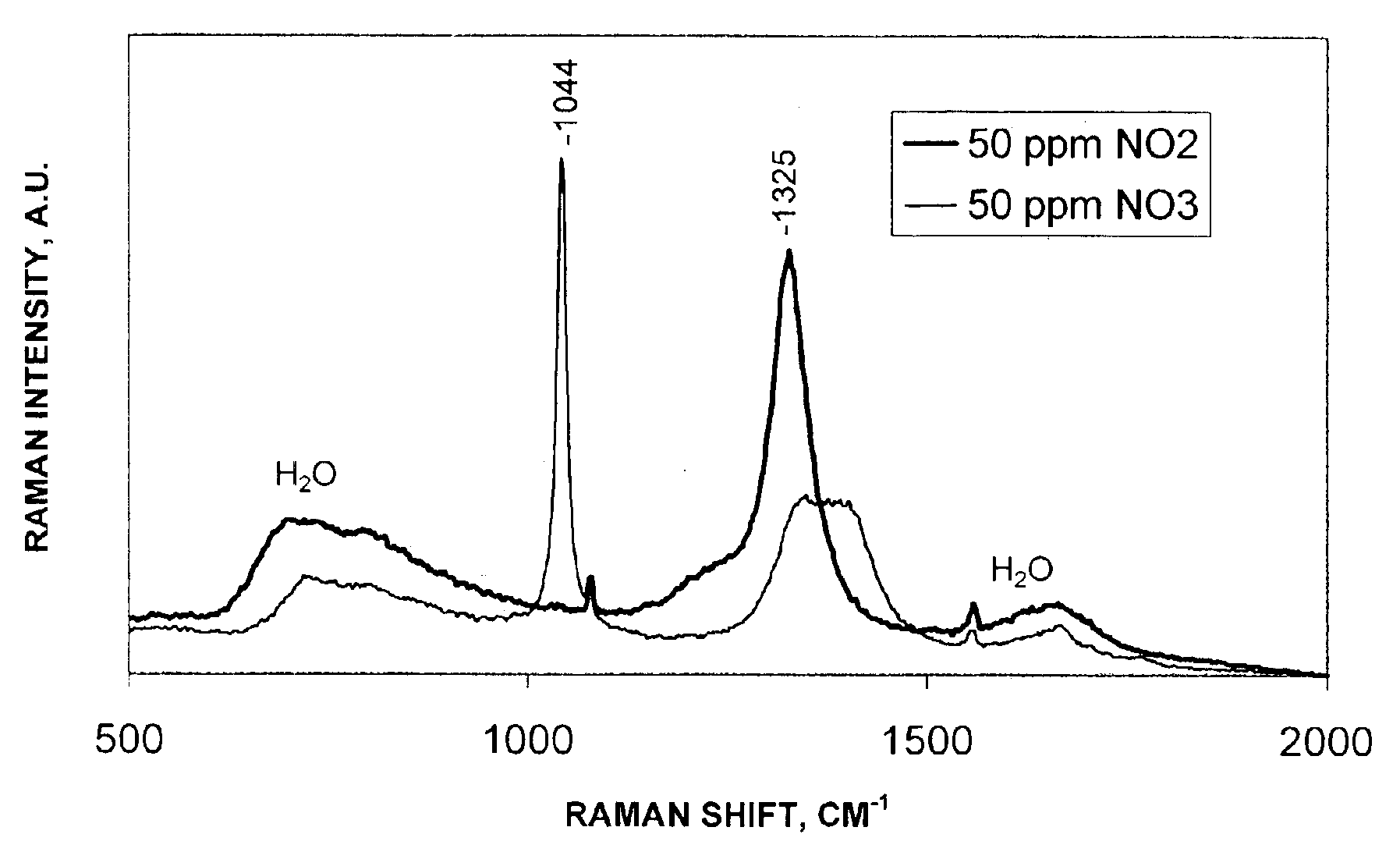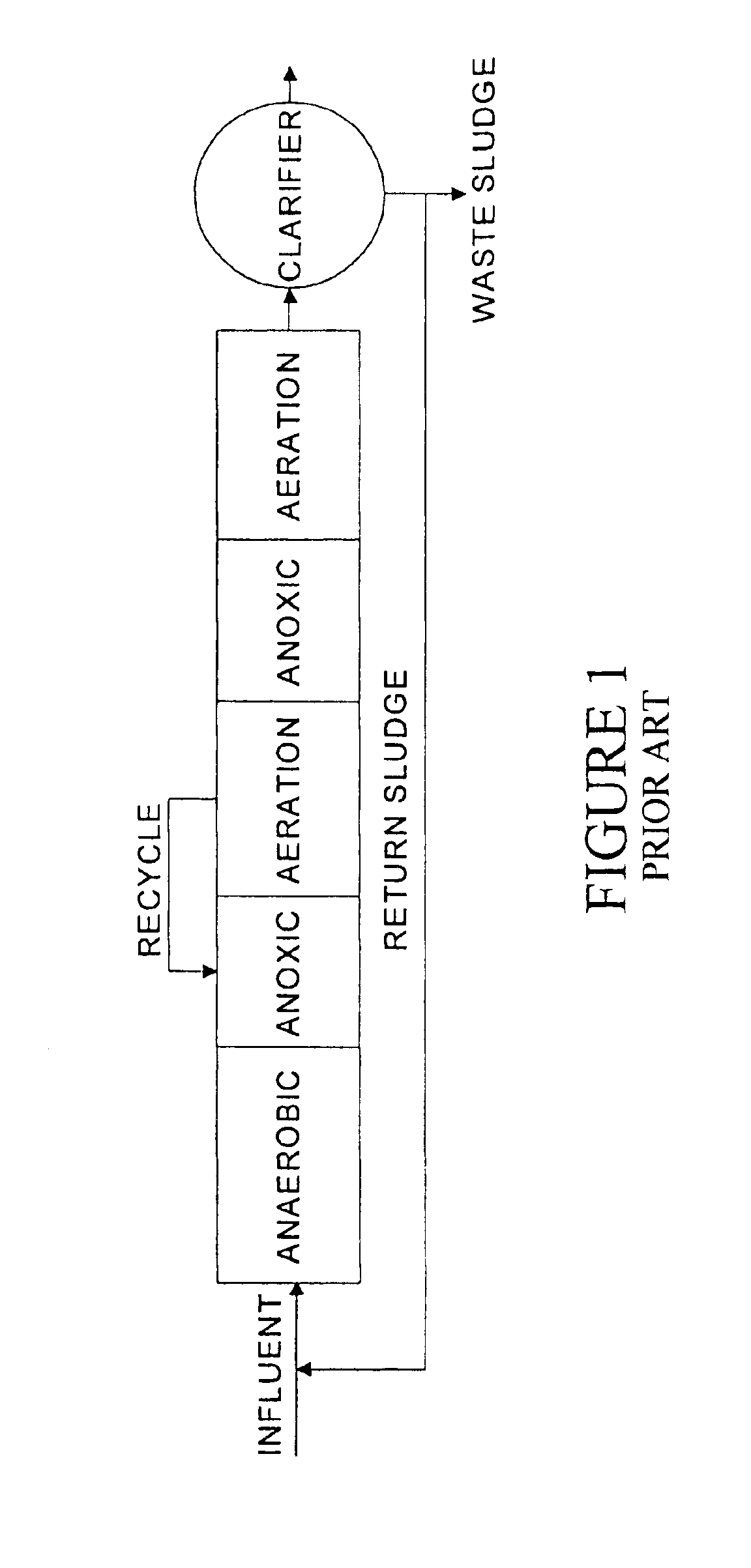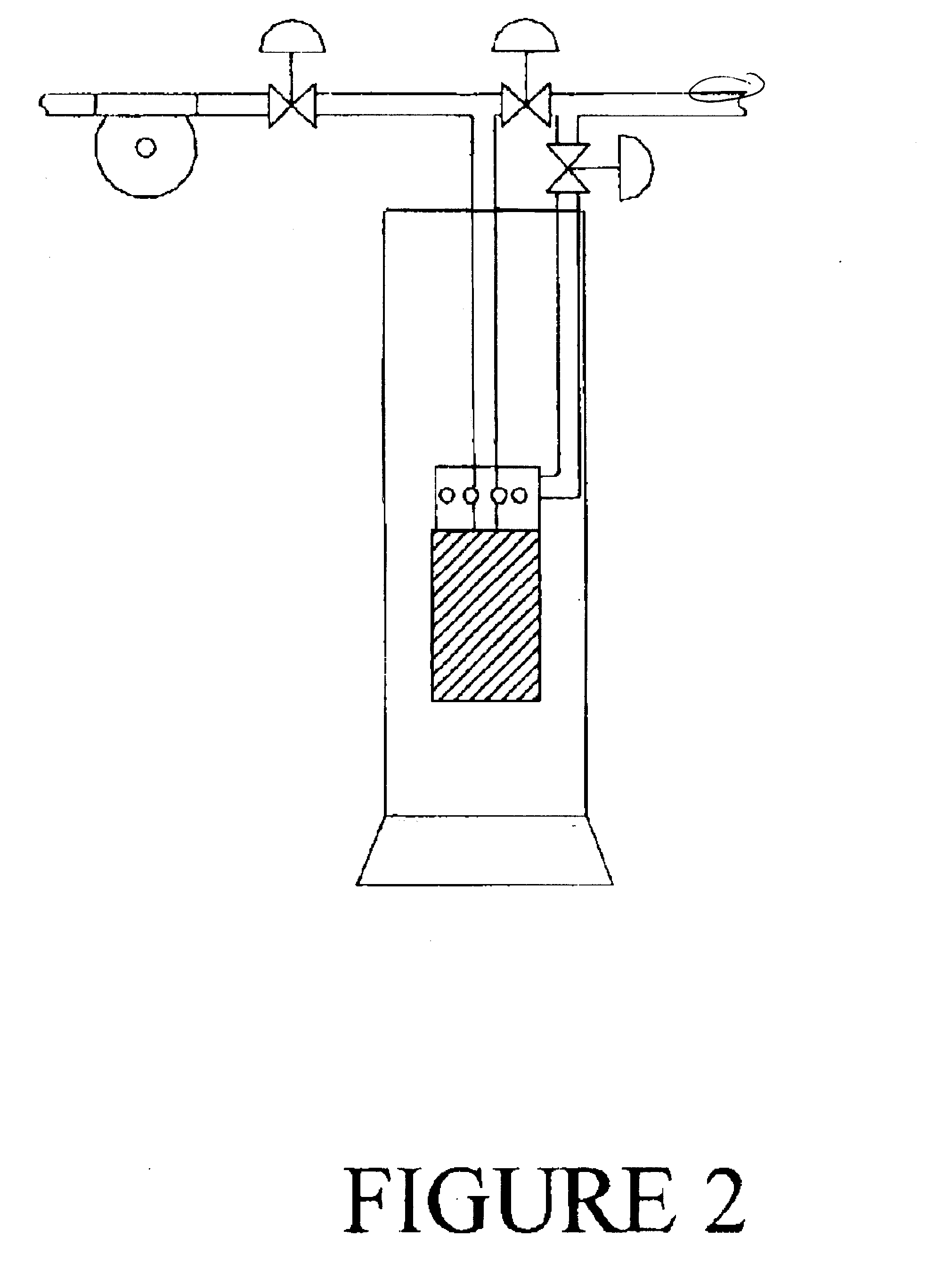System for improved biological nutrient removal
a biological nutrient and system technology, applied in the field of ultraviolet resonance raman (uvrr) spectroscopy and membrane filtration techniques, can solve the problems of inability to achieve reliable and consistent sndn operating conditions, inability to provide the necessary accuracy of do instruments, and loss of nitrifiers from the system
- Summary
- Abstract
- Description
- Claims
- Application Information
AI Technical Summary
Problems solved by technology
Method used
Image
Examples
Embodiment Construction
[0066]Various experiments were conducted to determine the effectiveness of determination of nitrite and nitrate ions in aqueous solution by means of UV resonance Raman spectral measurement.
[0067]Standards for nitrate and nitrite were prepared from 0.1 to 50 ppm (as N) in increments as follows: 0.1, 0.2, 0.5, 1.0, 2.0, 5.0, 10, 20, 30, 40, 50 ppm. These initial nitrate and nitrite standards were prepared from a 1000 ppm and a 0.1 M reagent grade standard solutions respectively. Both of the standard stock solutions were traceable to NIST primary standard sources. Reagent Grade Type II water was used in the preparation of these standards.
[0068]A solution sample representative of the soluble components of an activated sludge process reactor was prepared. The sample was obtained from the Grand Coulee, WA municipal wastewater treatment plant (design capacity 0.30 MGD) which uses a cyclic aerobic / anoxic process operating mode. A sample of mixed liquor was drawn from the aeration basin just...
PUM
 Login to View More
Login to View More Abstract
Description
Claims
Application Information
 Login to View More
Login to View More - R&D
- Intellectual Property
- Life Sciences
- Materials
- Tech Scout
- Unparalleled Data Quality
- Higher Quality Content
- 60% Fewer Hallucinations
Browse by: Latest US Patents, China's latest patents, Technical Efficacy Thesaurus, Application Domain, Technology Topic, Popular Technical Reports.
© 2025 PatSnap. All rights reserved.Legal|Privacy policy|Modern Slavery Act Transparency Statement|Sitemap|About US| Contact US: help@patsnap.com



